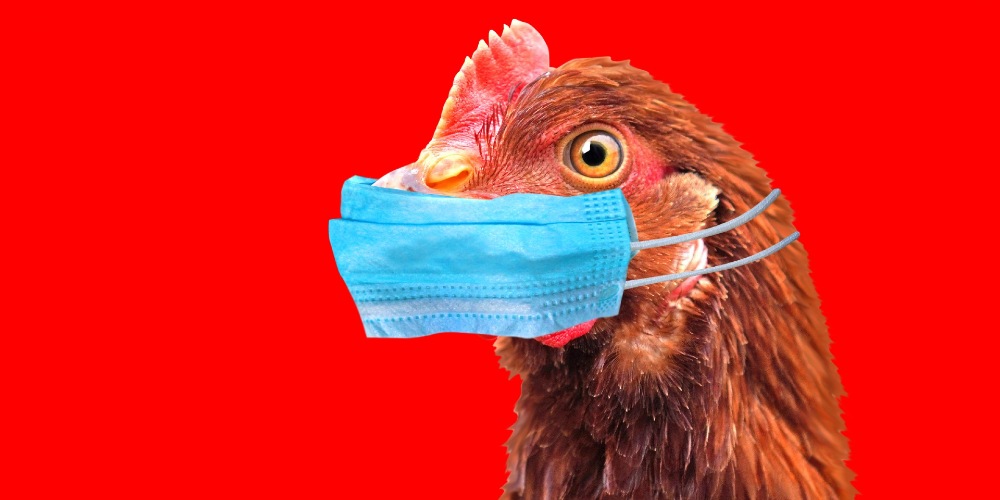Editor’s Commentary: Kit Knightly is a very entertaining writer who wields sarcasm like a samurai sword. That’s why the article below is so important, but there’s a caveat. We SHOULD take Bird Flu seriously, not because it has been proven to pose a real threat to humans but because the powers-that-be are already using it to attack our food supply, particularly beef.
This is a very concerning development because once the panic boat launches it’s very difficult to bring it back to harbor. We saw this with Covid Pandemic Panic Theater and we’re very likely going to see far worse gaslighting and fearmongering with Bird Flu if it’s allowed. This is why it’s so important to quash their narrative while it’s forming by alerting as many as possible to the machinations of the Globalist Elite Cabal. We might not be able to bring the panic boat back to harbor but we can sink it before it makes it all the way out to sea. Here’s Kit Knightly…
(Off-Guardian)—The bird flu narrative is constantly developing, so I figured it was time for an update. You know…to keep you all abreast of the chicken situation. Ba dum tss!
Back in April the scare stories were about Bird Flu jumping from birds to cattle and from cattle to people, and how – as a result – we should stop eating red meat.
Things have moved on since then. May has been a busy month for bird flu watchers. Back on May 9th it was reported that 70 people in Colorado were being “monitored” for the disease following “potential exposure”, but no details on the exact nature or method of exposure were ever released.
Another poultry worker, this time in Michigan, became the second official US case on May 21st. There are now fears that Bird Flu may have spread to the food supply, after it was found in a “condemned dairy cow”.
Four days ago, Forbes reported a “new study” claiming “Drinking Infected Milk Could Spread Disease”. While NPR is warning that “limited testing leaves safety questions unanswered” regarding raw, unpasteurized milk.
But it’s not just cows we have to worry about now. The Atlantic is worried about pigs, with Katherine Wu calling them “The Bird-Flu Host We Should Worry About”
Just today the Telegraph reported that a “slight evolution” in the H5N1 influenza strain has allowed it to “adapt to mammalian hosts”.
One ecologist told phys.org that infections in dairy cows are just “the tip of the iceberg”, and that mammals all over the globe are infected.
It’s spreading outside America too. The world’s third human case was supposedly an Australian child recently returned from travelling in India, alongside that two Victorian farms have reported cases of a different strain.
Naturally, China is going along with it, reporting their own fatality due to a third strain of bird flu earlier today. So that’s the problem chuntering along at a decent pace. How’s the solution coming along? An article in MedicalXPress discusses the “ethical considerations” for various bird flu interventions.
New vaccines – both for chickens and humans – are being developed with Covid-like efficiency. The human shot is of course mRNA based.
Reuters reports that the US, UK, EU and Canada are all “taking steps to acquire or manufacture H5N1 bird flu vaccines”. Some nations are already considering mandating all poultry farm workers take the shot when it becomes available.
- Preserve your retirement with physical precious metals. Receive your free gold guide from Genesis Precious Metals to learn how.
As you can see, things are moving pretty fast – almost all of these stories are from just the last three or four days. I predicted in my recent article that bird flu was the main contender for “the next pandemic”, and it looks like that’s where we’re headed.
The good news is that the human cases caused a surge in the value of Moderna and BioTech’s stock. Isn’t that nice?
Of course, that will be nothing compared to the riches that will start pouring in when the new Bird Flu vaccines get emergency approval.
Sound off and join the fight by subscribing to the End Medical Tyranny Substack.
Controlling Protein Is One of the Globalists’ Primary Goals
Between the globalists, corporate interests, and our own government, the food supply is being targeted from multiple angles. It isn’t just silly regulations and misguided subsidies driving natural foods away. Bird flu, sabotaged food processing plants, mysterious deaths of entire cattle herds, arson attacks, and an incessant push to make climate change the primary consideration for all things are combining for a perfect storm to exacerbate the ongoing food crisis.
The primary target is protein. Specifically, they’re going after beef as the environmental boogeyman. They want us eating vegetable-based proteins, lab-grown meat, or even bugs instead of anything that walked the pastures of America. This is why we launched a long-term storage prepper beef company that provides high-quality food that’s shelf-stable for up to 25-years.
At Prepper All-Naturals, we believe Americans should be eating real food today and into the future regardless of what the powers-that-be demand of us. We will never use lab-grown beef. We will never allow our cattle to be injected with mRNA vaccines. We will never bow to the draconian diktats of the climate change cult.
Visit Prepper All-Naturals and use promo code “veterans25” to get 25% off plus free shipping on Ribeye, NY Strip, Tenderloin, and other high-quality cuts of beef. It’s cooked sous vide, then freeze dried and packaged with no other ingredients, just beef. Stock up for the long haul today.



Corona targeted us this bird flu BS is targeting out food supply. Don’t fall for the gas lighting.